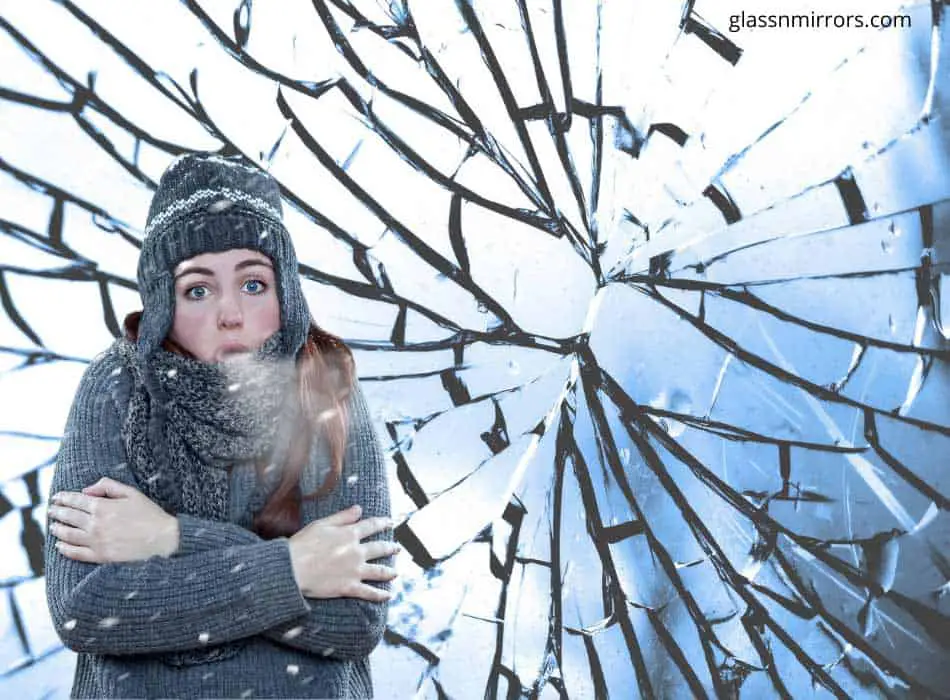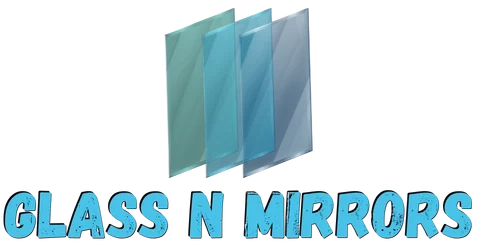The human race has used mirrors that have reflected human evolution throughout history. In some places, it is so cold, I have often wondered, can a mirror break in the cold?
Just as severe cold weather doesn’t break windows, it is unlikely that it would cause a mirror to break. However, glass and metal can fail from thermal stress (uneven temperatures) or thermal shock (hot to cold in quick succession). For plastic mirrors, the risk of breaking due to cold weather is virtually non-existent.
Glass might have been the most common resource for producing mirrors for quite some time, but it is not the only material that can be used in production. Other materials such as polished metal, acrylic, and polycarbonate have grown in popularity as alternative products used to manufacture reflective surfaces.

Table of Contents
Thermal Stress And Shock On Glass And Stainless Steel Mirrors
Steel
Thermal fractures in stainless steel are a result of rapid temperature changes. A scenario that includes a combination of thermal loading (fluctuations of warm and cold, which causes thermal fatigue) and localized stress is where a stainless steel mirror is mounted to a wall with four screws. One may be tightened more than the others, causing localized stress to that specific point. The thermal fatigue along with the stress point may cause a thermal fracture to develop.
Thermal stress breaks
It occurs due to temperature changes that cause the glass to expand (from heat) and contract (from cold). This can happen when exposing one side of the glass to more heat than the adjacent area. Or when the center gets more heat than the edges, this is referred to as thermal differences and causes thermal stress.
“The main cause of thermal stress is when the center of the window is heated by solar energy (or heating units inside the window) while the edges of the window (encased within a frame at the very edges) remain cool.” The same principle would apply to glass mirrors; though it is unlikely to happen, it can occur under the right circumstances.
Did you know why are phone screens made of glass? I have written a full explanation in my article.
Thermal shock
Imagine your car’s windscreen is frozen; would you pour boiling water over it? Not a good idea, right? This is called thermal shock – a drastic change in the temperature – and will most likely result in a broken window.
If you were to take a mirror exposed to high temperatures and submerge it into a vat of ice water, it would break. Since there is no good reason for anyone to do such a thing – and risking the seven years of bad luck – the likelihood of glass mirror breaking due to thermal shock is low on probabilities.
Mirrors are unaffected by normal cold snaps.
Your mirror will not break
At What Temperature Do Glass/Mirrors Break?
It is safe to say that all of us have mirrors inside of our homes. We look into them daily. But are mirrors affected by temperature?
Heat
If a severe cold front does not break glass, will it withstand harsh heat as well? Heatwaves that can reach up 134 degrees Fahrenheit will not break a mirror, only when exposed to extreme thermal variations. Tempered glass can endure steady temperatures of up to 450 degrees Fahrenheit.
Cold
Glass does become more brittle as temperatures drop; this means a greater risk for fractures, chipping, and breakages. There is a high probability that mirrors might break in cold climates when it thumps into something; for example, when you move and the mirrors are not correctly secured in thick coverings. Localized stress, as explained with the stainless steel above, can also apply to glass.
Most of us know what happens when you freeze a glass bottle with water inside. When water freezes, it expands, and this causes the bottle to break. Apart from thermal stress, mirrors will most likely break when heated to a certain point and immediately introduced to freezing temperatures; this is referred to as thermal shock.
Car mirrors
If your car’s side mirror has a chip from a wayward stone, it is a good idea to have it fixed before the winter comes. Though it might not shatter due to the cold, there is a possibility that a crack can develop from the pressure on the weak spot. The same applies to your windscreen.
The Various Materials Used To Make Mirrors
Polished metal mirrors
Using metals to create mirrors is a practice dating back to 2000 BC; they used copper and bronze, but the metals would tarnish quickly and needed to be repolished repeatedly. Today, stainless steel (as an example) offers a better finish that doesn’t require constant polishing.
These mirrors are heavier than glass and plastic and quite expensive to fabricate due to the materials used and production costs. When glass or acrylic doesn’t suit your needs and heavy-duty is what you are after, stainless steel is the way to go.
There is little chance of extreme cold weather breaking metal mirrors; they are durable and long-lasting when given proper care (especially in marine environments). However, stainless steel can develop thermal fatigue resulting in thermal cracks.
Acrylic mirrors
As one of the cheaper alternatives to polished stainless steel, acrylic mirrors are lightweight, shatterproof, resistant to UV, and transported with ease. Like glass and stainless steel, these plastic mirrors will not break when the weather dives below freezing.
Plastic mirrors do not shatter, which makes them safer to use and install. Some disadvantages of acrylic mirrors are that they are prone to scratches, warping and can bend easily with installation, leading to distortion. Warping can be prevented by using a rigid backing for the application.
Polycarbonate mirrors
Although polycarbonate is another plastic, lightweight material, it is more durable than acrylic mirrors. A special treatment coating will make this nearly indestructible material scratch-resistant. However, manufacturing will be more costly than its plastic counterpart but worth it when you need a durable mirror. Polycarbonate, like acrylic, will not break due to cold weather.
Glass
Most commonly, mirrors are made by applying a thin layer of metallic coating – like silver or aluminum – to one side of a glass sheet. This process transforms the see-through pane into a reflective surface. Glass is a brittle material and can easily shatter upon impact; it is also susceptible to thermal stress and shock that can cause cracks or breaks.
Glass might be the most used material for everyday use mirrors, but it cannot be used for all purposes because of its brittle nature. However, glass mirrors are not prone to scratches or warping and are less expensive than acrylic and polycarbonate.
Special care is needed when transporting and installing these mirrors; one slip of a hand could result in catastrophe with broken glass shards everywhere. If safety is a major concern, one of the plastic alternatives will be the better option.
How To Prevent Thermal Cracks On Glass Mirrors
To avoid thermal cracks or breakage, monitor the area where you want to place the mirror and make sure that it’s exposed to even temperatures throughout the day. Having one side exposed to the sun while the other side remains in the shade may cause a crack or breakage.
If you have heating inside your home, place your mirrors away from any direct heat sources, this can cause the mirror to heat up and contribute to temperature stresses.
Framed mirrors might be more susceptible to thermal breakage. It is recommended to use a darker frame as it absorbs the heat more or less alongside the mirror; where light-colored frames heat up slowly because it reflects the light.
Conclusion
Plastic materials such as acrylic and polycarbonate are weather resistant and have an extremely low (probably not any) probability of breaking due to cold weather. Brittle materials such as stainless steel and glass can fracture when thermal or localized stresses are introduced, but it is unlikely to fail due to constant cold weather.
